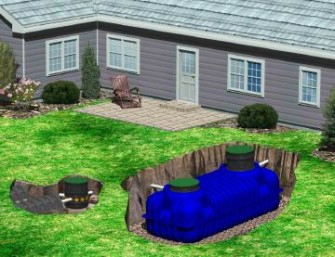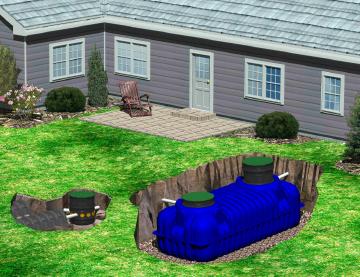Scared of Septic Systems? 7 Answers to Common Questions
 It’s a home feature that can make prospective buyers nervous: a septic tank. Part of a home’s wastewater system, a septic tank is found in households that aren’t served by municipal sewers. Instead, these standalone systems are designed to dispose of and treat the household’s wastewater independently. If you’re considering buying a home with a septic system, here are some things you might want to know:
It’s a home feature that can make prospective buyers nervous: a septic tank. Part of a home’s wastewater system, a septic tank is found in households that aren’t served by municipal sewers. Instead, these standalone systems are designed to dispose of and treat the household’s wastewater independently. If you’re considering buying a home with a septic system, here are some things you might want to know:
Are Septic Systems Common?
Septic systems are pretty common, actually. About 25 percent of the U.S. population relies on such systems, whether shared among multiple households or set up as individual systems. While most people think septic systems are a rural home feature, they can also be found in urban and suburban locales.
How Does a Septic System Work?
A pipe collects all the home’s wastewater and transfers it to an underground, watertight septic tank. Here, solids (known as “sludge”) settle to the bottom, and floatable materials (known as “scum”) float to the top; both are contained by the tank and are periodically pumped out by a professional. The middle layer contains liquid wastewater (known as “effluent”) that exits the tank into a buried drainfield in the yard, where the wastewater disperses into the soil. The soil filters out contaminants and beneficial bacteria break down any organic materials.
Is it Part of the Drinking Water System?
No. Many homes with septic systems also have a private well. But, the septic system is entirely independent from the well; its purpose is not to treat wastewater so it can become drinkable, but to safely disperse it in a way that prevents contamination.
How do Septic Systems Differ?
The size of the drainfield and the soil differentiates one from another. For instance, liquids have a tougher time penetrating clay than sandy soil. In these cases, the system might be set up differently. The drainfield also has to be large enough to handle the liquid volume a family generates. To avoid the possibility of clogging the system, don’t use a home’s toilet, sink, or disposal as a wastebasket for dental floss, coffee grinds, kitty litter, paint or chemicals.
What is the Maintenance for a Septic System?
Pumping of the septic tank by a professional is required to remove the sludge and scum; the frequency is determined by the tank size and the level of home activity (how much wastewater is generated). Most three-bedroom homes should have a 1,500-gallon septic tank pumped every three to five years. The EPA says some systems may need to be pumped more often —annually in some cases. Besides pumping, the tank should be inspected regularly for leaks or clogs. Red flags that the system may have a clog include occasional bad odors and slowly draining or gurgling fixtures. Homeowners should avoid septic tank additives—products that claim to break down sludge and scum inside a tank to minimize the need for pumping—because they can cause damage to the system.
How much is Maintenance?
This depends on tank and drainfield sizes, tank accessibility, and how far away waste must be hauled for disposal. Pumping a 1,500-gallon tank might cost $300.
What Should I do Before I Buy a Home with a Septic System?
Know your state’s rules. Some require an inspection before a title transfer. But even if your state doesn’t require an inspection, your lender might. (Conventional home inspections typically don’t include an inspection of a septic system). An inspection can detail the system’s condition, if it’s sited a proper distance from a well (to avoid contamination), and can confirm the absence of invasive tree roots in the drainfield, which can damage the system. Also, know the age of the system. While a well-designed, correctly installed septic system can last 25 to 30 years, prices can vary widely if you do have to replace a system.. A conventional (gravity-flow) system may be as low as $4,000, but an alternative system with electrical or mechanical parts can run from $15,000 to $35,000.

